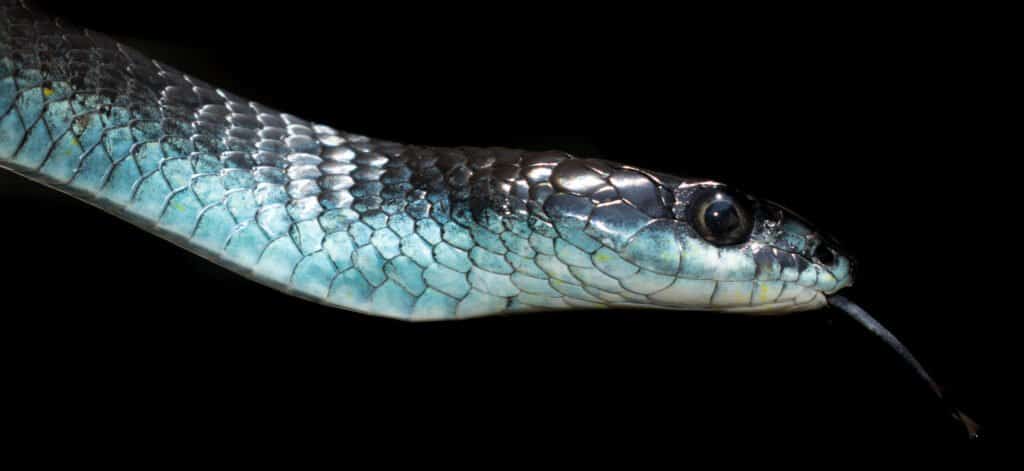Introduction
Tiger serpents (Notechis scutatus) are among one of the most fascinating yet feared reptiles discovered in Australia. With their striking appearance and potent poison, these serpents evoke a mixture of wonder and care. Observing tiger snakes in their native environment can be an exhilarating experience for nature fanatics, wild animals photographers, and scientists alike. Nevertheless, it's critical to approach this undertaking with respect for the pet's habitat and an understanding of safety measures to avoid snake bites.
In this extensive guide, we'll discover how to safely observe tiger snakes in their all-natural environment. We will certainly cover subjects varying from recognizing their habits and habitats to first aid for serpent attacks-- equipping you with knowledge to improve your experience while minimizing dangers.

What is a Tiger Snake?
Tiger snakes are very venomous serpents native to Australia, especially Tasmania and coastal areas. Website link They are known for their distinct grouped pigmentation appearing like a tiger's stripes, which can range from yellowish-brown to dark brownish or even black.
Physical Characteristics
Tiger serpents are medium to large-sized serpents that can grow up to 2 meters long. Their bodies are robust, and they have a broad head that is noticeably wider than their necks.
Habitat Preferences of Tiger Snakes
These reptiles typically live in wetlands, estuaries, and seaside areas yet can also be located near freshwater resources like rivers and lakes. Comprehending where these serpents live is crucial for any person seeking to observe them safely.
Understanding Tiger Serpent Behavior
Are Tiger Snakes Venomous?
Yes, tiger eastern brown snake bite snakes are among one of the most poisonous snake types around the world. Their venom contains neurotoxins that can cause severe medical problems if bitten.
Behavioral Traits
Tiger serpents are typically shy creatures; they like to avoid human interaction. However, they can become aggressive if threatened or caught.

Where Can You Locate Tiger Snakes?
Tiger Snake Habitat Exploration
To securely observe tiger serpents in their natural environment, it's vital first to identify where they thrive. They tend to favor:
- Coastal marshlands Mangroves Swamps Riverbanks
Best Areas for Observation
Some suggested locations include:
- Tasmanian wetlands The coastlines of southern Australia National parks with water bodies
Safety Preventative measures Before Observing Tiger Snakes
Understanding the Threats of a Tiger Snake Bite
Although encounters with tiger serpents can be thrilling, understanding the dangers included is extremely important:
Recognize signs and symptoms of a serpent bite: swelling at the website, discomfort radiating from the bite area. Know emergency contacts: Acquaint yourself with neighborhood emergency situation services. Carry a first-aid set particularly equipped for snake bites.First Aid for Snake Bites: What You Need to Know
Knowing what actions to take if bitten could conserve your life or somebody else's:
- Stay tranquility; activity increases poison spread. Call for clinical assistance immediately. Do not use ice or effort suctioning.
How to Securely Observe Tiger Snakes in Their All-natural Habitat
When you decide to observe tiger serpents in the wild:
Dress Appropriately: Wear long trousers and tough boots. Use Binoculars: Maintain a secure range while observing these reptiles. Avoid Abrupt Movements: Quick movements might stun them. Stay on Established Trails: Stay clear of straying into thick underbrush where visibility is low.Equipment Required for Observation
Essential Gear Checklist
- Binoculars First-aid kit especially developed for serpent bites Field guidebook on Australian reptiles Camera (with zoom capacity)
Snake Bite Emergency treatment Kit Essentials
A fully equipped first aid package need to consist of:|Product|Purpose|| -------------------------------|-------------------------------|| Compression bandage|To debilitate the damaged area|| Antihistamines|For allergic reactions|| Emergency situation contact numbers|Quick accessibility during emergency situations|
Interpreting Tiger Snake Signals
Understanding how tiger snakes communicate through body movement helps viewers evaluate when it's secure or hazardous:
Common Behaviors
Defensive pose: If curled or increased off the ground. Retreating behavior: When they slowly pull back from possible threats.Dealing With Potential Encounters
Even with precautions taken, an encounter may still take place throughout your monitoring trip:
Remain calm; stressing just heightens risks. Slowly retreat without turning your back on the snake. Make your visibility recognized vocally yet stay clear of abrupt movements.Frequently Asked Concerns Concerning Tiger Snakes
1. What need to I do if I see a tiger snake?
Remain calmness; observe from a distance without troubling it.
2. Are infant tiger snakes dangerous?
Yes, juvenile tiger serpents are born venomous and may position dangers comparable to adults regardless of being smaller.

3. How common are tiger snake bites?
While occurrences take place yearly in Australia, casualties are rare due to punctual therapy availability.
4. Can I keep a tiger snake as a pet?
Keeping wild tiger serpents as animals is unlawful in several regions due to conservation laws.
5. What does a tiger serpent bite look like?
Bite marks typically show 2 puncture injuries along with localized swelling and discoloration.
6. Exactly how reliable is antivenom?
Antivenom treatment is highly effective when administered prompt after a bite.
Conclusion
Observing tiger serpents in their all-natural habitat provides an exhilarating chance for wild animals fans but need to be approached with caution and respect for both the animal and its environment. By arming yourself with understanding about these fascinating reptiles-- consisting of recognizing their actions and Snakebite treatment Australia precaution-- you can take pleasure in remarkable experiences while substantially decreasing threats connected with encounters.
In recap, constantly focus on safety by preparing properly prior to embarking on any kind of wildlife monitoring expedition-- specifically when dealing with some of nature's most poisonous animals like the tiger snake!